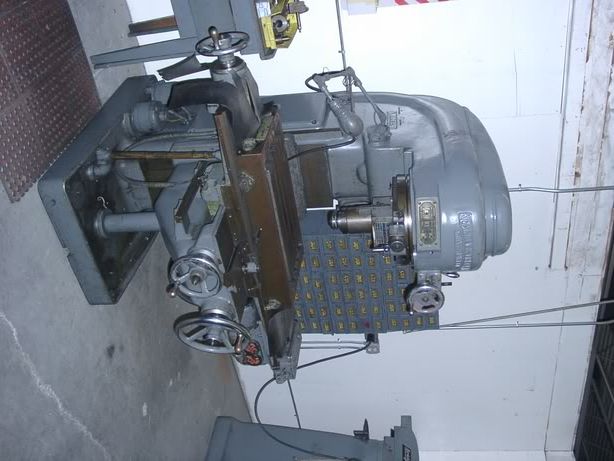My new retirement “Toy Shop” has two CNC style rotary phase converters setup so that I can run either one or both in tandem for maximum output. The one is a GWM 5 HP and the other is a DesCO Electrical Industry10HP. The three-phase output is 240 Volts and works great for all my machines. Except for one old machine I need 480 Volts of three-phase power. It is a 1950’ish Kearney Trecker Model D rotary head milling machine with a ¾ HP spindle motor and two ¼ HP power feed motors. It would be extremely hard to change over to 240 Volts.
Although Desco says that it is possible to step up the current to 480 volts from their converter, when I installed a 3KW three-phase transformer it just stalled the unit. Same thing when I ran both converters in tandem. Desco only reply was that I had a bad transformer. Any thoughts about this? Is it possible to step up the power to 480 Volts using a dry-type transformer? Someone told me that I need to increase the two-phase input to 480 Volts before I convert it to three-phase.
Results 1 to 7 of 7
-
04-24-2006, 06:43 PM #1
 Registered
Registered
- Join Date
- Nov 2005
- Posts
- 6
 Boosting three-phase 240 Volts to 480 Volts
Boosting three-phase 240 Volts to 480 Volts
-
04-24-2006, 07:42 PM #2
I don't see why that did not work, is it when you switched the machine on? or just the transformer?
Actually those motors are not that big, The AC motors usually have 240v connections that you can drop them down to 240, the only thing is you would have to check wire size and overloads, but for those sizes it should only be overloads to change.
The control and servo's might pose a problem but they will most certainly be 120v or 240v, so it should not be a big deal, even if you have to fit a control transformer.
I would think you should be able to convert with minimal fuss, as long as the motors are changeable.
Al.CNC, Mechatronics Integration and Custom Machine Design
“Logic will get you from A to B. Imagination will take you everywhere.”
Albert E.
-
04-24-2006, 09:16 PM #3
 Registered
Registered
- Join Date
- Dec 2005
- Posts
- 3319
Keep one think in mind:
When you go from 440 to 220, you halve the voltage and at least double the current.
When you go from 220 to 440, you double the voltage and halve the current BUT you have to have enough POWER input to run as well as start at the stepped up voltage.
Thus, you're probably going to see a decent current surge during start-up that you have to provide for. Now I seem to recall that you get into power factor compensation involving "lead and lag" that I don't have a clue how to deal with. However, you get into inductance versus capacitance issues that I don't know how to deal with other than to spell (hopefully correctly).
Perhaps someone could step in and 'splain it better. It shouldn't be THAT difficult but then again, maybe it could....
-
04-24-2006, 09:28 PM #4I suspect the largest load is the spindle, and if it is only 3/4hp as first stated , with two 1/4hp motors, that is not very much to have to worry about. Around 10amps an 240.
 Originally Posted by NC Cams
Originally Posted by NC Cams
Al.CNC, Mechatronics Integration and Custom Machine Design
“Logic will get you from A to B. Imagination will take you everywhere.”
Albert E.
-
04-25-2006, 02:31 PM #5
 Registered
Registered
- Join Date
- Nov 2005
- Posts
- 6
I had no load on the machine side of the transformer when I turned on the power.
From what I can tell from looking at the control panel, it was wired originally from the factory for 240 Volt three-phase operation. Somewhere in its’ life it was converted over to 480 Volt as it stands today. It was totally operational before I moved it into my garage shop at the higher voltage. Besides having a hard time reading the wire numbers to change it over to run on 240 Volt, it would be a major job on the main spindle motor. As it would have to removed from the topside and take a full day’s worth of work. Additionally all the motor starter heaters would need to be upsized. It also has a ¼ HP air pump and a ¼ HP coolant pump.
Here is a picture of the machine...

-
04-25-2006, 03:04 PM #6
You might try putting the main 240 legs only across each input pair in turn to the transformer and comparing current in turn to detect if the transformer is OK.
Make sure when you connect the RPC to the transformer the two main 240 legs are fed to the transformer separately and then take all three legs through a contactor or switch to bring the tfxr on line, and see if that works.
Al.CNC, Mechatronics Integration and Custom Machine Design
“Logic will get you from A to B. Imagination will take you everywhere.”
Albert E.
-
05-01-2006, 03:27 PM #7
 Registered
Registered
- Join Date
- Nov 2005
- Posts
- 6
Problem solved, Machine is working 100%
I was looking for Zebras, when all I need was to look for a Horse. It turned out to be a short in the primary wires feeding transformer. The “made up leg” was shorting to ground. Not enough to blow a 20 Amp breaker and I didn’t leave it on long enough to overheat. I would imagine if it was one of the other legs it would have blown the breaker.






 Reply With Quote
Reply With Quote

